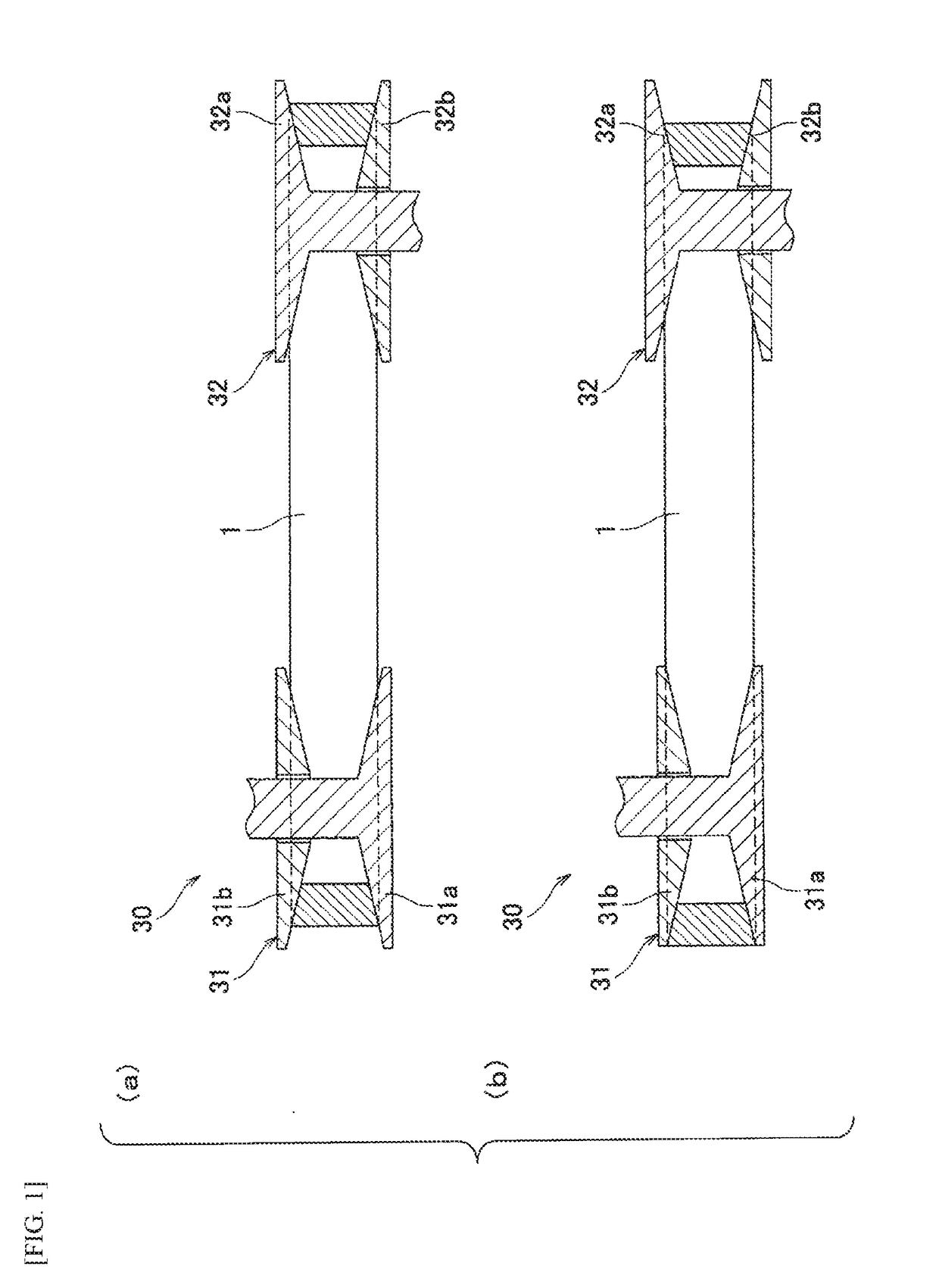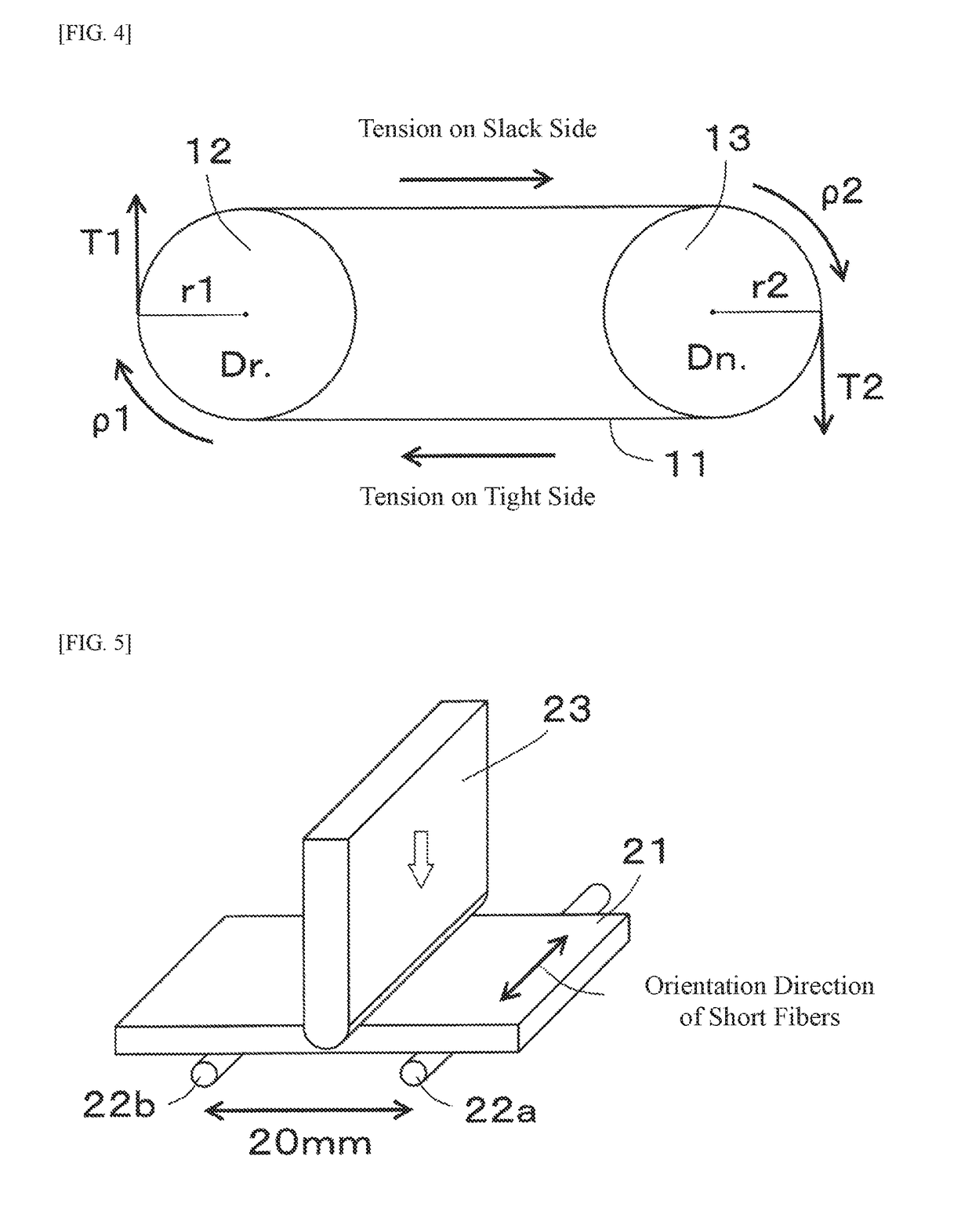The variable speed belt used for such an application is used with a harsh
layout at a
high load as well as the belt being significantly bent.
On the other hand, a rubber composition having a relatively low mechanical characteristic is used as an
adhesive rubber because a
bending fatigue resistance decreases when the mechanical characteristic is excessively increased.
However, from a viewpoint of compounding design of such a rubber composition, the following problems (1) to (4) which are caused by running of the belt in a
high load environment and are factors for a decrease in durability (life) are concerned.
(2) In the case where the
friction coefficient of a contact surface (power transmission surface) with the pulley is high, the belt does not smoothly move, so that the belt is easily deformed (in particular, buckling called dishing).
(3) As the belt moves in the radial direction of the pulley or deforms (buckles), a
shear stress occurs inside the belt, in particular, the
shear stress is likely to concentrate on the interfaces where there are differences in mechanical characteristic (in this case, interface between compression rubber or tension rubber and adhesion rubber), and interfacial peeling (cracks) occurs.
However, the lateral
pressure resistance and fuel saving performance of the power transmission belt are in an antinomic relationship.
For example, it has been known that in the case where the compression rubber layer of the V-belt is blended with a reinforcing material such as a short
fiber,
carbon black, and silica so as to increase the rubber
hardness to improve the lateral
pressure resistance, the bending rigidity is increased and thus, the power
transmission loss occurs especially in a
layout of a small pulley
diameter.
Specifically, in the variable speed belt used for a belt type
continuously variable transmission device of a motorcycle or the like, it is a big problem to achieve both the lateral pressure resistance and the fuel saving performance, and for example, PTL 2 discloses a power transmission belt provided with a compression rubber layer containing a
fatty acid amide and a short
fiber.
However, since the adhesion rubber layer of PTLs 1 to 7 is reinforced only with silica or
carbon black, there was a possibility that the
friction coefficient of the adhesion rubber layer is larger than that of the compression rubber layer, the sliding property of the frictional power transmission surface is decreased, and the belt may not move smoothly on the pulley.
Specifically, in a
high load environment such as a variable speed belt and in running accompanying movement in the radial direction of the pulley, the belt deforms and the
shear stress occurs inside the belt, and thus, the shear stress is likely to concentrate on the interface of the
layers different in mechanical characteristic [in this case, interface between the compression rubber layer (or tension rubber layer) and the adhesion rubber], and there is a possibility that the interfacial peeling (cracks) occurs.
That is, even with the belts of these literatures, it cannot be said that both the lateral pressure resistance and the fuel saving performance are achieved at a high level.
Furthermore, even when the belt of this literature is applied to the variable speed belt, both the lateral pressure resistance and the fuel saving performance cannot be achieved at a high level.
That is, the lateral pressure resistance and fuel saving performance are in the antinomic relationship, and it has been difficult to satisfy both of them (both bending rigidity and sliding property) conventionally.
 Login to View More
Login to View More 


